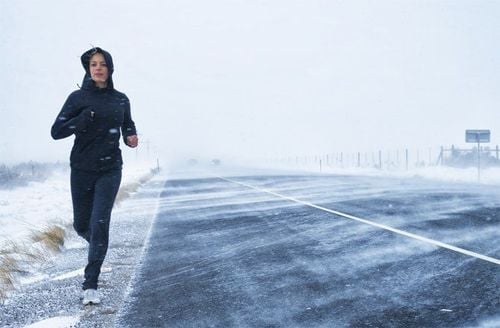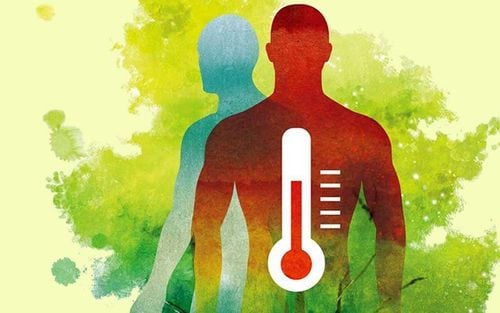The article was reviewed by Dr. Trần Quốc Tuấn - Head of the Intensive Care Unit (ICU) - Emergency Resuscitation Department - Vinmec International General Hospital Phú Quốc.
When the temperature drops significantly, without necessary measures to keep warm, a person can experience hypothermia ranging from mild to severe, and even death. So, what is the limit of human cold tolerance?
1. Mechanisms Helping the Human Body Resist Cold
The body has several mechanisms to cope with the harshness of the environment, especially cold, to protect its life. Specifically:
- Vasoconstriction: When sensing cold air, the body reacts by redirecting blood away from protruding parts like fingers and toes. This blood is moved towards the central areas of these organs. Vasoconstriction helps limit the amount of body heat lost to the environment.
- Shivering: As the temperature drops, some people may exhibit shivering, goosebumps, chattering teeth, and tremors. This is a warning from the brain to direct muscles to contract continuously. This reaction helps the body generate additional heat, raising body temperature, keeping vital organs warm, and signaling the need to find a warmer place.
2. How is Human Cold Tolerance?
There is currently no research clearly defining how cold humans can tolerate. However, several points regarding human cold tolerance can be mentioned:
2.1. Individual Cold Tolerance Varies
- People accustomed to cold climates have a better tolerance for cold. Specifically, those living in snow-covered areas year-round, such as Antarctica or Siberia in Russia (with an average temperature of about -60°C), can survive if they have good protective measures for their bodies. This temperature is nearly unbearable for those living in warmer regions.

- People with a cold feel colder compared to healthy individuals. The reason is that during a cold, the nerve pathways controlling body temperature are set to a higher temperature, causing the body to react as if it is cold until the body temperature returns to a stable level.
- In individuals with Raynaud's symptoms, the slow blood flow causes fingers and toes to feel cold.
- Pregnant women may feel excessively cold, indicating a deficiency in thyroid hormone.
- Women generally tolerate cold less well than men in the same environment because their skin temperature is lower (due to thicker subcutaneous fat and estrogen levels).
- The sensation of cold can be hereditary in some individuals.
- Some people feel cold because those around them appear to be cold, a phenomenon known as cold sensation contagion.
2.2. Human Cold Tolerance
The normal core temperature of the human body is 37°C. When the body gets cold, hypothermia can occur. Hypothermia happens when body temperature drops below 35°C, severely affecting the nervous system, heart function, and blood flow, leading to life-threatening situations. Poor heart function results in inadequate blood circulation to body parts, putting the body in shock and increasing the risk of liver and kidney failure. Children and the elderly face higher risks due to weaker heart conditions. Additionally, elderly individuals on beta-blockers may experience a decreased heart rate, raising the risk of hypothermia in cold weather.
The danger of hypothermia depends on the extent of body temperature reduction. Specifically:
- Body temperature drops to 35°C: Mild hypothermia.
- Body temperature drops to 32.2°C: The body’s temperature compensatory mechanisms begin to fail; mental status may change, and the patient may experience memory loss.
- Body temperature at 27.7°C: The patient may begin to lose consciousness.
- Body temperature below 21°C: Severe hypothermia occurs, leading to death.
The record for the lowest body temperature recorded in an adult is 13.7°C. At that time, the individual had been submerged in cold water and frozen for a considerable duration.
A wet body loses heat 25 times faster than in dry air. Typically, the body compensates for heat loss through shivering and redirecting blood from extremities to vital organs. However, this mechanism cannot compensate for rapid heat loss in water. Within 20 to 30 minutes, depending on the water temperature, the body temperature of victims can drop quickly. Victims will die when their temperature falls below 27°C.
If a person sleeps while their body temperature is decreasing, they will perish more quickly. Especially in extreme cold conditions, if not kept warm, individuals may not die but can still suffer significant injuries. Prolonged exposure to cold reduces blood flow to the extremities, leading to frostbite and tissue damage.

3. Measures to Stay Warm in Winter and Prevent Hypothermia
Individuals should not test their cold tolerance, as the human body can suffer significant harm and become ill due to extreme cold. Therefore, everyone should take steps to stay warm and remind those around them to do the same.
Specifically, in cold weather, individuals should wear enough layers—at least three layers of clothing. The innermost layer should be moisture-wicking fabric to allow sweat to escape from the skin, the middle layer should provide insulation, and the outer layer should protect against wind, rain, and other environmental factors. Additionally, wearing thick, warm, and waterproof shoes is essential to protect the feet and toes. A thick hat also helps keep the head and ears warm, and wearing gloves is important to keep the fingers warm, especially when exposed to cold weather or cold water.
To prevent hypothermia, after spending time outdoors or in cold water, individuals should remove wet clothes and dry off. It's important to start warming the core body first; warming the extremities too quickly can cause shock. Particularly, individuals who are cold should absolutely avoid soaking in hot water, as rapidly increasing body temperature can disrupt heart rhythm.
Articles refer to the source: bbc.com
To arrange an appointment, please call HOTLINE or make your reservation directly HERE. You may also download the MyVinmec app to schedule appointments faster and manage your reservations more conveniently.








